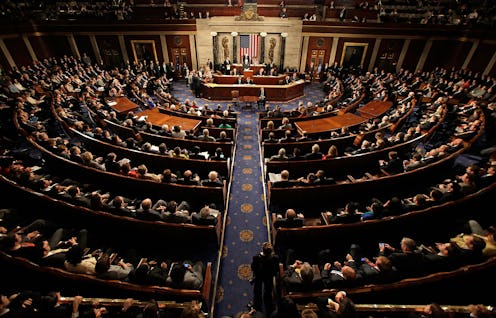News
The Differences Between Delegates And Electors
One of the things that is kind of confusing abount elections, both primaries and the general election, is how winners are actually determined. We know that our votes factor in, but each of those votes is not really counted as one vote toward a candidate. Rather, in the primaries, we have delegates that are apportioned based, in various ways, on the results of primaries and caucuses; in the general election, we have electors whose votes go to candidates, based in a certain way on the popular vote. Though they serve similar purposes in their respective election seasons, there are several differences between delegates and electors.
One major difference is that the number of delegates per state and the number of electors per state vary. Both parties have a different number of delegates in the primaries — 2,383 for Republicans and 4,765 for Democrats. The number of delegates per state is determined by a number of factors, including the state's population, how many Republicans or Democrats hold office there, and how many former officeholders the state has. It's much more simple with the general election; the National Archives and Records Administration explained that each state has a number of electors equivalent to the number of people it has in Congress, giving us a total of 538 electors.
A highly significant difference between delegates and electors is how they are allocated based on the popular vote. In the primaries, delegate allocation is left up to the parties and the states. This leads to some pretty wonky delegate math. All states allocate their Democratic delegates proportionally, meaning candidates get roughly the same number of delegates as they do the popular vote (pledged delegates, that is — more on the unpledged ones to come). Republicans mix it up, with some states allocating delegates proportionally and many adopting winner-take-all models.
Electors are almost exclusively allocated on a winner-take-all basis. In fact, only two states have implemented a proportional allocation method: Maine and Nebraska. A candidate must win the most votes in every other state, but not necessarily a majority, to be given all the state's electoral votes. Though the allocation of delegates and electors is different, one thing is the same for both the primaries and the general election: a candidate must receive more than half the total number of delegates or electors in order to win, whether it's the party nomination or the presidency.
Another interesting comparison between delegates and electors is how they are, or are not, required to vote. According to FairVote, in 21 states, there are no laws that bind electors to vote for the candidate that their party is running. Electors who either abstain from voting or go rogue and vote for a different candidate are known as "faithless electors," and they are a rarity. FairVote reported that, since 1948, only eight electors have been "faithless."
Unbound delegates, on the other hand, are much more codified into their party's systems. The Democrats have over 700 "superdelegates," party VIPs who can vote for whomever they want and are recognized as officially unbound. The Republicans have at least 100 officially unbound delegates through various state laws, with handfuls of others that became unbound when candidates who won some of them exited the race. These unbound or unpledged delegates, like faithless electors, have never factored in significantly to an election's results.
Electors and delegates differ in number, allocation, and binding. But they both serve the purpose of providing a buffer between the direct popular vote and the results of elections, giving party officials greater control over the nomination process should they choose to exercise it.
